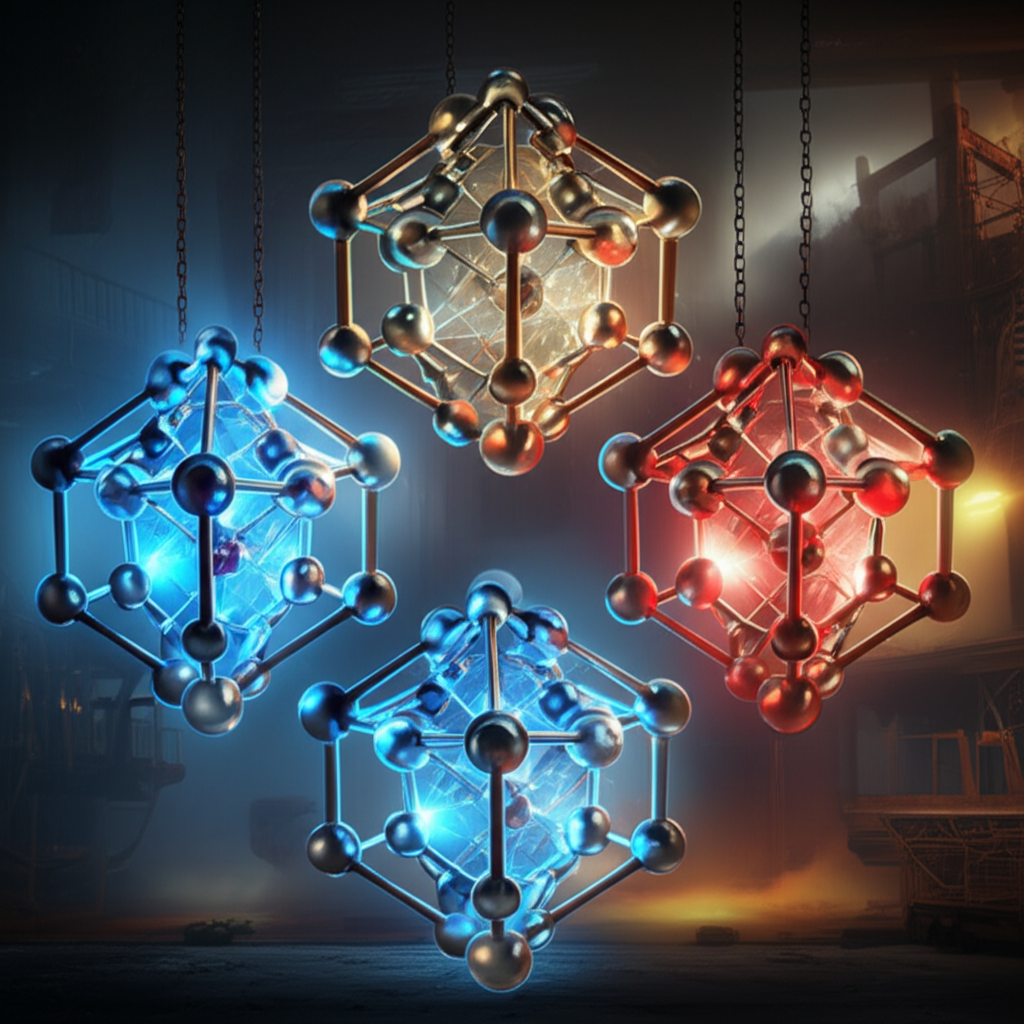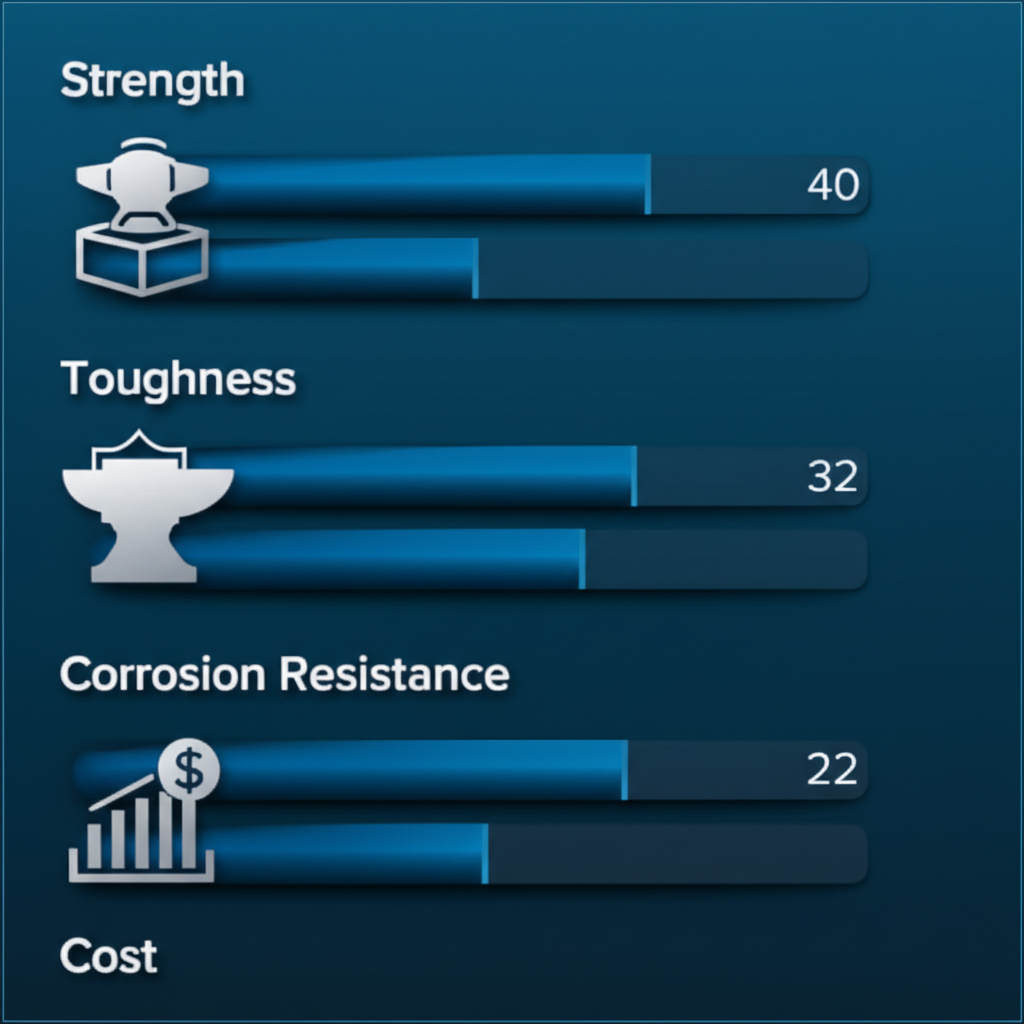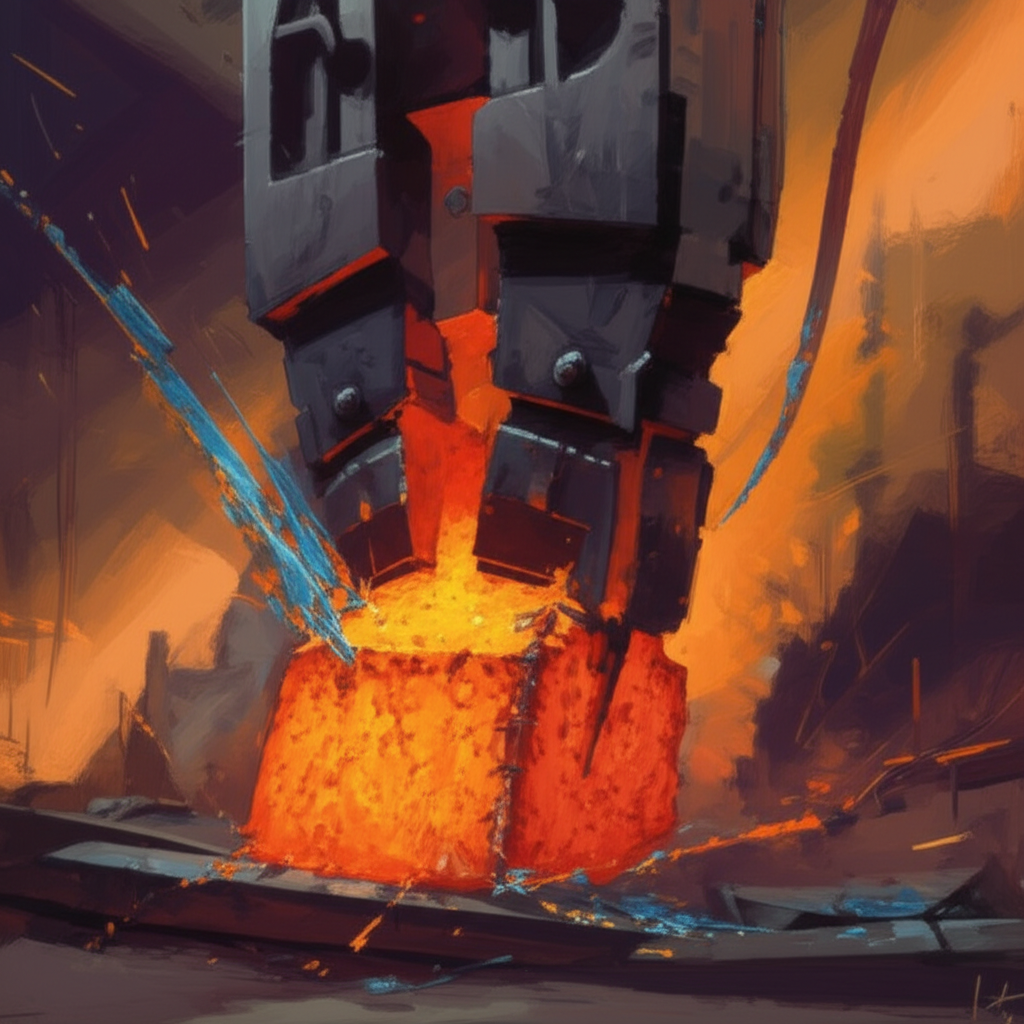A Guide to Selecting Steel Alloys for Hot Forging

TL;DR
The most common steel alloys for hot forging fall into four main families: Carbon Steels, Alloy Steels, Stainless Steels, and Tool Steels. Carbon steels offer cost-effective versatility, while alloy steels provide enhanced strength and toughness for demanding applications. Stainless steels deliver superior corrosion resistance, and tool steels are engineered for extreme heat and wear. The optimal choice depends on the required mechanical properties, performance environment, and project budget.
The Primary Families of Forging Steels: An Overview
Understanding the fundamental categories of steel is the first step in selecting the appropriate material for a hot forging project. Each family possesses a distinct chemical composition that dictates its performance characteristics, from strength and hardness to resistance against corrosion and heat. These differences make certain steels ideal for specific applications, ranging from automotive components to aerospace hardware. The four primary groups used in forging are Carbon, Alloy, Stainless, and Tool steels.
Carbon Steels are the most widely used group in forging due to their excellent cost-effectiveness and versatile properties. Their primary alloying element is carbon, and they are categorized as low, medium, or high carbon based on content. Medium carbon steels are a popular choice for forging, offering a balanced combination of strength, ductility, and wear resistance. They are relatively easy to work with and respond well to heat treatment, making them a reliable option for general-purpose components.
Alloy Steels are carbon steels modified with additional elements like chromium, nickel, manganese, or molybdenum. As detailed in a guide from Huyett, these additions are designed to enhance specific properties such as hardenability, toughness, and strength at high temperatures. This makes them essential for high-stress applications where the performance of carbon steel would be insufficient. Their improved mechanical properties come at a higher cost but are critical for parts that must withstand significant fatigue and wear.
Stainless Steels are defined by their high chromium content (a minimum of 10.5%), which creates a passive layer that provides exceptional corrosion resistance. This family is further divided into groups like austenitic (e.g., 300 series) and martensitic (e.g., 400 series), each with unique attributes. Forging stainless steel requires precise temperature control but results in parts that are durable, hygienic, and resistant to harsh environments, making them indispensable in the medical, marine, and food processing industries.
Tool Steels represent a specialized category engineered to withstand extreme conditions. They contain elements like tungsten and molybdenum, which allow them to maintain hardness and structural integrity at elevated temperatures. This makes them the ideal material for manufacturing the tools and dies used in forging processes themselves, as well as for components subjected to intense heat and mechanical stress.
- Common Carbon Steel Grades: 1045, 1050, 1060
- Common Alloy Steel Grades: 4140, 4340, 8620
- Common Stainless Steel Grades: 304, 316, 420
- Common Tool Steel Grades: H13
Key Properties Influencing Alloy Selection for Hot Forging
Selecting the correct steel alloy for a hot forging application goes beyond simply knowing the main families. It requires a careful evaluation of several key mechanical and thermal properties. The interplay between these characteristics determines how a material will behave during the forging process and, more importantly, how the final component will perform in its intended service environment. An informed decision balances performance requirements with material costs to achieve optimal results.
One of the most critical properties is forgeability, which describes the metal's ability to be shaped under compressive force without cracking. Materials with good forgeability, like low and medium carbon steels, require less force and can be formed into complex shapes more easily. In contrast, highly alloyed materials like certain stainless and tool steels can be more difficult to forge and demand precise temperature control to avoid defects. Another key factor is hardenability, which is the alloy's capacity to be hardened through heat treatment. Alloy steels containing elements like chromium and molybdenum exhibit high hardenability, allowing for the creation of components with exceptional strength and wear resistance throughout their cross-section.
Corrosion resistance is paramount for parts exposed to moisture, chemicals, or other corrosive agents. Stainless steels are the premier choice in this regard due to their high chromium content. For applications demanding performance under extreme heat, high-temperature strength and resistance to thermal fatigue are essential. Hot-work tool steels, such as H13, are specifically designed for this purpose. Finally, cost-effectiveness is a practical consideration that cannot be ignored. While alloy and stainless steels offer superior performance in many areas, carbon steels often provide sufficient properties for a wide range of applications at a significantly lower price point.
| Property | Carbon Steel | Alloy Steel | Stainless Steel | Tool Steel |
|---|---|---|---|---|
| Strength & Hardness | Good | Excellent | Very Good | Exceptional |
| Toughness | Good | Excellent | Good | Very Good |
| Corrosion Resistance | Poor | Fair to Good | Excellent | Fair |
| Forgeability | Excellent | Good | Fair to Good | Fair |
| Cost-Effectiveness | Excellent | Good | Fair | Poor |

Deep Dive: Common Carbon and Alloy Steel Grades
While a general overview of steel families is useful, engineers and designers often need to select a specific grade for their application. Carbon and alloy steels are workhorses in the forging industry, each offering a range of grades with distinct properties tailored for different uses. Understanding the nuances of these common grades is crucial for designing durable and reliable forged components.
Medium Carbon Steel: Grade 1045
Composition and Properties: Grade 1045 is a medium carbon steel known for its good balance of strength, toughness, and wear resistance. It has a nominal carbon content of 0.45%, which gives it better mechanical properties than low carbon steels while remaining relatively easy to machine and weld. It responds well to heat treatment, allowing for a significant increase in hardness and strength for demanding applications.
Forging and Applications: Due to its versatility and cost-effectiveness, 1045 steel is widely used for a variety of forged parts. It is a common choice for gears, shafts, axles, bolts, and connecting rods where moderate strength and toughness are required. Its straightforward forging process makes it a staple in many industrial and manufacturing settings.
Chromium-Molybdenum Alloy Steel: Grade 4140
Composition and Properties: Grade 4140, often called chromoly steel, is a low-alloy steel containing chromium and molybdenum. These alloying elements give it excellent toughness, high fatigue strength, and good abrasion and impact resistance after heat treatment. According to Amfas International, its high toughness makes it a common choice for aerospace and automotive parts.
Forging and Applications: 4140 is well-suited for producing components that must withstand high stress and heavy loads. Its applications are extensive, particularly in the automotive industry for parts like crankshafts, steering knuckles, and axles. For businesses focused on this sector, specialized forging services are essential. For example, for robust and reliable automotive components, you might check out the custom hot forging services from Shaoyi Metal Technology, which specializes in IATF16949 certified parts for the industry, from prototyping to mass production.
Forging with Stainless and Tool Steels: Applications and Challenges
While carbon and alloy steels cover a broad spectrum of applications, stainless and tool steels provide solutions for more specialized and demanding environments. Forging these materials requires greater expertise due to their unique chemical compositions and behaviors at high temperatures. However, the resulting components offer performance characteristics that are unattainable with other steel types, such as superior corrosion resistance or extreme heat tolerance.
The Nuances of Forging Stainless Steel
Stainless steels, particularly the austenitic grades like 304 and 316, are prized for their exceptional resistance to corrosion and their hygienic properties. This makes them essential in the food processing, medical, and marine industries. However, forging them presents challenges. As noted in a guide from Great Lakes Forge, stainless steel must be forged within a precise temperature range, typically between 1700 and 2300°F, to prevent defects like grain coarsening or cracking. These materials also tend to work-harden more rapidly than carbon steels, requiring more energy to shape. Despite these difficulties, the forging process enhances the inherent strength and grain structure of stainless steel, producing parts with the highest level of structural integrity for critical applications.
The Demands of Forging Tool Steels
Tool steels are a class apart, formulated to create the dies and tools used in manufacturing processes like forging, casting, and stamping. Hot-work tool steels, such as the H13 grade, are specifically engineered to endure repeated cycles of extreme heat and pressure without losing their hardness or cracking. Their composition, rich in elements like chromium, molybdenum, and vanadium, gives them high wear resistance and toughness at elevated temperatures. Forging tool steel is a complex process that demands stringent control over heating and cooling cycles to achieve the desired microstructure and mechanical properties. The components produced, such as forging dies and extrusion molds, are critical for industrial production, enabling the mass manufacturing of parts from other metals.

Frequently Asked Questions
1. What is the main difference between forging carbon steel and alloy steel?
The primary difference lies in their composition and resulting properties. Carbon steel's properties are mainly determined by its carbon content, offering a good balance of strength and ductility at a low cost. Alloy steel contains additional elements (e.g., chromium, nickel, molybdenum) that enhance properties like hardenability, toughness, and strength, making it suitable for more demanding, high-stress applications than carbon steel.
2. Why is temperature control so critical when forging stainless steel?
Temperature control is crucial for stainless steel because its chemical composition makes it sensitive to thermal changes. Forging outside the optimal temperature range can lead to serious defects. Excessive heat can cause undesirable grain growth and scaling, weakening the material, while insufficient heat can make the steel too resistant to deformation, leading to surface cracking under the force of the forging press or hammer.
3. Can all steel types be forged?
While most steel grades can be forged, some are not suitable for the process. Materials with high brittleness, such as cast iron, lack the necessary malleability and will crack under compressive force. Similarly, steels with high concentrations of impurities like sulfur or phosphorus can become brittle at high temperatures, making them poor candidates for hot forging.
 Small batches, high standards. Our rapid prototyping service makes validation faster and easier —
Small batches, high standards. Our rapid prototyping service makes validation faster and easier — 
